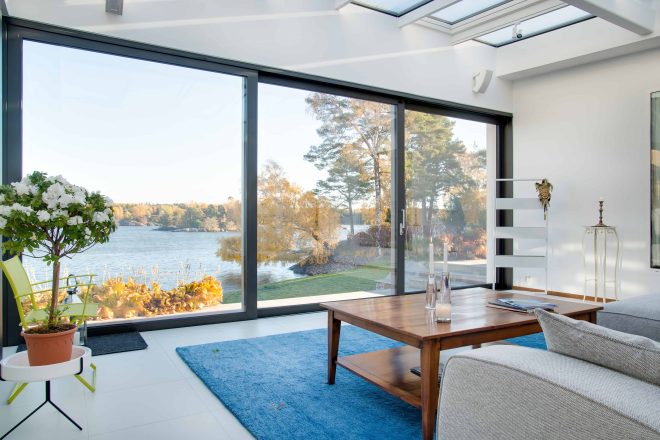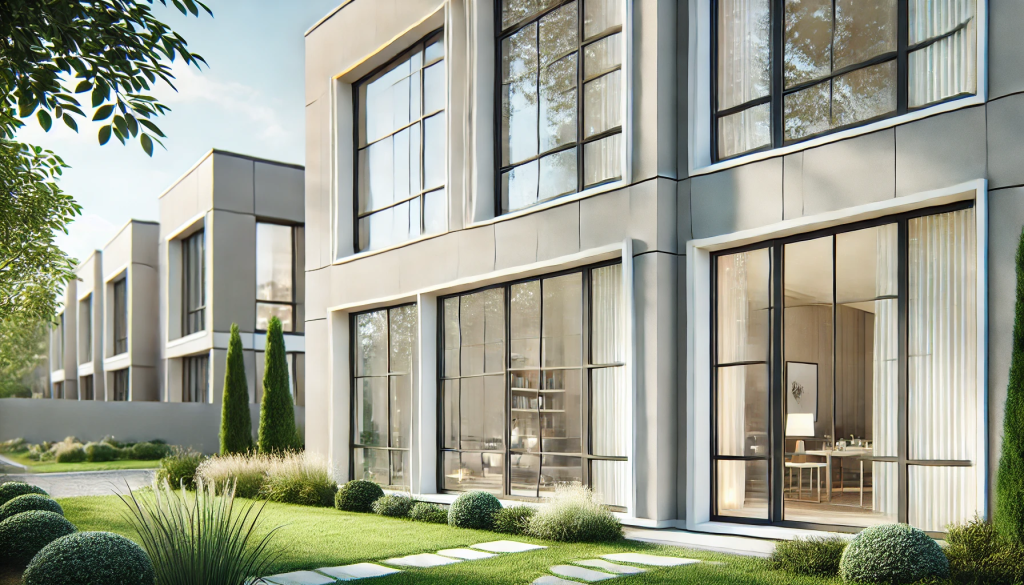
If you have ever sat near a window in winter and felt a cold draft, or in summer and felt like the sun was baking your room, you already know how much windows affect comfort. The truth is, old or basic windows waste a lot of energy, and that means higher bills.
That’s why in 2025, many families are upgrading to uPVC windows. They’re strong, low-maintenance, and designed to keep homes warm in winter and cool in summer. Simply put, they do a better job of controlling temperature and saving energy than most other types of windows.
In this blog, I’ll explain why energy efficiency matters, what makes uPVC windows different, and the best options for homes this year.
Why Choose Energy-Efficient uPVC Windows?
Windows aren’t just for looking outside, they can either save or waste a lot of energy. Old or poorly designed windows let heat escape in the winter and allow too much heat in during the summer. This means your heater or air conditioner has to work harder, which raises your energy bills.
That’s why many homeowners are switching to energy-efficient uPVC windows. Compared to older materials like wood (timber) or aluminum, uPVC does a much better job at insulation. Wood can warp over time, and aluminum conducts heat, which isn’t great if you’re trying to keep your home cozy. uPVC, on the other hand, is sturdy, weather-resistant, and built to keep the temperature inside stable.
The best part? Choosing uPVC windows doesn’t just help you save money on heating and cooling. It’s also good for the planet since it reduces wasted energy and lowers carbon emissions. So, with uPVC windows, you get comfort, savings, and eco-friendly living all in one package.
Key Features of Energy-Efficient uPVC Windows
Not all windows are built the same. Here are the features that make uPVC windows stand out:
- Double and Triple Glazing: Instead of one sheet of glass, these windows have two or three, with air or special gas in between. This extra layer acts like a blanket, trapping heat inside.
- Low U-Value: A U-value measures how well a window keeps heat from escaping. The lower the number, the better. Top-quality uPVC windows in 2025 have U-values between 0.8 and 1.5 W/m²K, which means they’re excellent at insulation.
- Low-E Glass: Special glass that reflects heat back into your home while still letting in sunlight. It keeps rooms warm without wasting energy.
- Multi-Chambered Frames: uPVC frames aren’t solid, they have tiny chambers inside that act like insulation, reducing heat loss.
- Airtight Seals: These windows are welded tight, so drafts can’t sneak through.
- Gas Fills: The space between panes is often filled with argon or krypton gas, which keeps heat from moving around.
- Durability: Unlike wood, uPVC won’t rot, crack, or warp. That means long-lasting energy savings with little maintenance.

ALT TAG: A modern home exterior showcasing stylish uPVC windows.
Benefits of Energy-Efficient uPVC Windows
Upgrading your windows does more than just cut bills. Here’s what you’ll notice:
- Lower Energy Bills: Better insulation means less heating in winter and less cooling in summer.
- Comfort All Year: No more cold drafts or overheated rooms.
- Noise Reduction: Double and triple-glazing blocks outside noise.
- Easy Maintenance: uPVC doesn’t need sanding, painting, or sealing.
- Style Options: Available in many colors and designs to match your home.
- Eco-Friendly: Many brands now use recycled uPVC, making it a greener choice.
Best uPVC Window Options in 2025
If you’re shopping for new windows, here are the top choices to consider:
Double Glazed uPVC Windows
- Great for most homes in moderate climates.
Triple Glazed uPVC Windows
- Best insulation.
- Perfect for colder regions or families who want maximum efficiency.
Low-E Coated uPVC Windows with Argon Gas Fill
- Ideal if you want warmth in winter but still plenty of natural light.
Multi-Chambered Frames
- Strong and durable.
- Extra insulation is built into the frame.
How to Choose the Right Windows for Your Home
Not every home needs the same type of window. Here’s what to think about:
- Climate: Triple glazing for cold regions, double glazing for mild ones.
- Budget: Double glazing is usually more affordable, but triple glazing pays off long-term.
- Design: Choose a style that fits your home’s look.
- Energy Ratings: Look for labels like A+ or A++ to be sure you’re getting efficient windows.
- Installation: Even the best windows won’t perform well if installed poorly, so pick a trusted installer.
Recommended Brands and Resources
If you want to dive deeper, here are some trusted names and guides:
- Alan Hill Windows: Top energy-efficient types.
- Evolution Windows: Stylish Georgian-style double glazing.
- Needhams Window: Cooling benefits in summer.
- GreenMatch: Full guide to uPVC windows.
- Prime Glazing: High-quality modern options.
- Fenesta: How uPVC keeps homes cool.
- Calder Windows: Energy-efficient picks for 2025.
- Energy Saving Trust: Independent advice on saving energy at home.
Conclusion
From years of research and practical experience, I can say without hesitation that energy-efficient uPVC windows are one of the best investments you can make for your home in 2025. They don’t just look good they perform. The difference is noticeable: warmer rooms in the winter, cooler spaces in the summer, and a quieter, more comfortable home overall.
I’ve seen homeowners cut their energy bills significantly after switching, and the durability of uPVC means you won’t be dealing with constant repairs or maintenance. Whether you choose double glazing for affordability, triple glazing for maximum insulation, or Low-E coated glass for the perfect balance of light and warmth, the payoff is long-term comfort, lower costs, and real environmental benefits.
If you want a home that’s future-ready ready efficient, stylish, and sustainable, upgrading to uPVC windows isn’t just an option, it’s the smart move.
FAQs About Energy-Efficient uPVC Windows
1. What makes uPVC windows energy-efficient?
uPVC windows use features like double or triple glazing, Low-E glass, airtight seals, and insulated frames. These keep heat inside during winter and block extra heat in summer, which helps lower energy bills.
2. Are uPVC windows better than aluminum or wooden windows?
Yes. Wooden windows can warp or rot, and aluminum conducts heat, which makes them less efficient. uPVC is stronger, weather-resistant, and provides better insulation with less maintenance.
3. Do uPVC windows help reduce noise?
Absolutely. Double and triple glazing in uPVC windows also blocks outside noise, making your home quieter and more comfortable.
4. How long do uPVC windows last?
With proper care, uPVC windows can last 20-30 years or more. They don’t crack, rust, or rot like other materials, so they keep their performance over time.
5. Are uPVC windows eco-friendly?
Yes. Modern uPVC windows are often made with recycled materials and help reduce wasted energy, making them a greener choice for the environment.
RELATED POST: Double Glazed uPVC Windows for Sound Insulation
GIPHY App Key not set. Please check settings